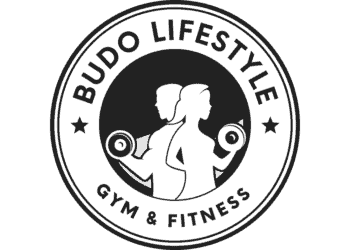How to breathe properly while exercising

“Don’t forget to breathe!” – is something we often hear from trainers. They like to remind you of this as if you don’t know how. You breathe in and out all your life. But during training, people tend to unconsciously neglect proper breathing during exercise, or you may not be doing it properly. Whether you’re running, walking, or squatting, learn the best techniques to get the smoothest performance out of your activity.
Not breathing is bad
People tend to hold their breath as a way to get extra core strength. But that’s not good. We need regular oxygen to fuel our muscles. By cutting off oxygen to our bodies, we risk herniation, muscle spasms, and dizziness, which can lead to a fall.
Breathing is part of the exercise process and an important factor in performing the exercises! Managing your breathing during exercise will bring you many benefits, such as reducing the harmful effects of stress hormones on the body, lowering heart rate and blood pressure, improving your body’s ability to withstand intense exercise, reducing the chance for injury, conserving energy by slowing down your breathing rate.
Bad breathing habits during training can reduce the efficiency of performing movements, as well as the enjoyment of exercise. Learning to breathe properly during exercise can improve your performance, endurance, and speed of recovery. Active exercise increases the efficiency of the respiratory system. Exercise increases lung capacity, and thus the total amount of air the lungs can hold.
How to breathe properly?
Proper breathing should be an integral part of your training. Maintain a balanced breathing rhythm. Before each effort, you should inhale, and in the last third of the exercise, exhale.
The correct way to breathe during strength training is to inhale during relaxation and exhale during exertion. Not only does proper breathing support the effort of the exercise and allow you to lift more with better control, but not breathing can lead to a hernia.
Let’s use bicep curls as an example. Exhale as you lift the weights to curl, then inhale as you lower. For push-ups, inhale as you lower to the floor and exhale as you push up. If you find yourself grunting or gasping for breath, it could be an indication that you’ve jumped on too much weight.
For cardio, you usually breathe in and out through your nose or through your mouth when the intensity increases. Note that the depth of breathing is proportional to the effort. Adjust the rhythm of breathing according to the rhythm of the exercise. High-intensity interval training HIIT can leave you out of breath—and fast. Let’s say you do 30 seconds of jumping jacks during a routine. You probably take big breaths through your mouth to get more oxygen quickly. But this actually lowers the level of carbon dioxide in the blood, inhibiting the body’s ability to release oxygen to the cells.
Oxygen is brought into the body through the nose. The hairs in your nose help purify the air and remove potential irritants and toxins, and the nasal passages and sinuses help regulate the temperature of the air you breathe. If you get to the point where you’re too out of breath and start to lose form, slow down until you can get going again.
Breathe on your stomach while running. Use the entire abdominal area for oxygen, not just the upper chest. You’ll have more energy to finish because air is the fuel for the aerobic system that your body uses during cardiovascular exercise.
Some runners prefer a rhythmic pattern. Inhale once through the nose and exhale twice through the nose as you run. The very well-known side stitches during running, usually under the right lower rib, are caused by improper use of the diaphragm.
Inhaling and exhaling, exercising during cool down, and stretching as well.
Practicing breathing while stretching allows you to condition your body in this way. It also allows you to move seamlessly between activity and rest, maintaining proper breathing throughout your workout.

Diaphragm
The diaphragm is a muscle located below the lungs, between the chest and the abdominal cavity. It should play a dominant role in the breathing process. However, some factors, such as stress or poor posture, cause many adults to not include the diaphragm in the breathing process, which is bad. In this case, breathing is shorter and shallower, because this process takes place only in the chest. Heart rate, along with blood pressure, increases more intensively and you will feel the consequences of improper breathing, especially during more intense training. The body will not be able to supply itself with as much oxygen-filled air as it needs. This is a common mistake that can lead to high blood pressure which is closely related to dizziness or nausea. This will definitely not help you achieve your goals in the gym.
